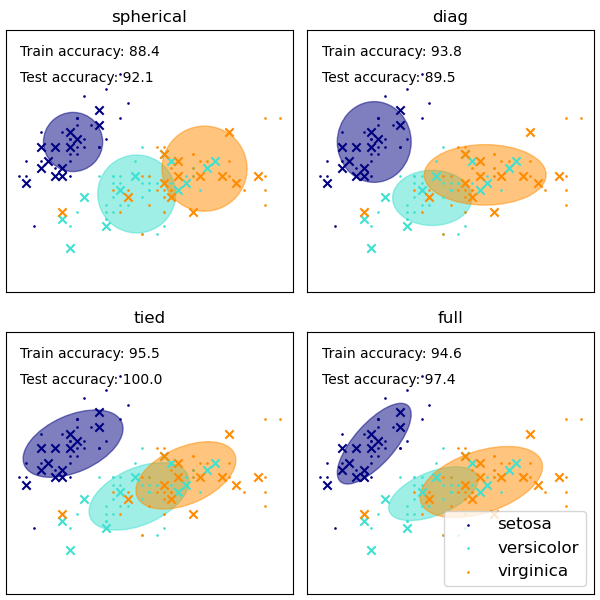
zeros (( k, n )) for j in range ( len ( mus )): for i in range ( n ): ws = pis * mvn ( mus, sigmas ). shape k = len ( pis ) ll_old = 0 for i in range ( max_iter ): exp_A = exp_B = ll_new = 0 # E-step ws = np. abs ( ll_new - ll_old ) < tol : break ll_old = ll_newĭef em_gmm_orig ( xs, pis, mus, sigmas, tol = 0.01, max_iter = 100 ): n, p = xs. sum ( exp_B ) # print distribution of z for each x and current parameter estimate print ( "Iteration: %d " % ( i + 1 )) print ( "theta_A = %.2f, theta_B = %.2f, ll = %.2f " % ( thetas, thetas, ll_new )) if np.
#Em algorithm in python update#
dot ( w_B, x )) # update complete log likelihood ll_new += w_A * ll_A + w_B * ll_B # M-step: update values for parameters given current distribution thetas = np. array (, ]) tol = 0.01 max_iter = 100 ll_old = 0 for i in range ( max_iter ): exp_A = exp_B = lls_A = lls_B = ws_A = ws_B = ll_new = 0 # E-step: calculate probability distributions over possible completions for x in xs : ll_A = mn_ll ( x, thetas ) ll_B = mn_ll ( x, thetas ) lls_A. Likelihood functions are the same and we have found the maximum log Repeat untilĬonvergence - at this point, the maxima of the lower bound and The log likelihood function at this new \(\theta\). \(\theta\) that is a lower bound of the log-likelihood but touches The log-likelihood but touches the log likelihood function at some FindĪnother function \(Q\) of \(\theta\) that is a lower bound of Shows why the EM algorithm using this “alternating” updates actuallyĪ verbal outline of the derivation - first consider the log likelihoodįunction as a curve (surface) where the x-axis is \(\theta\). Value for \(z\), and repeat till convergence. Then calculate \(z\), then update \(\theta\) using this new Maximization (EM) is simply to start with a guess for \(\theta\), \(z_i\), then we can estimate \(\theta\) since we have theĬomplete likelihood as above. what happens if x=123 and y=12345678… how do you split x into 4 digits?…you should use min instead of max.Assuming we have some estimate of \(\theta\), if we know You shouldnt split numbers by half of the max(len(x),len(y)).
#Em algorithm in python code#
– do this recursively until you arrive to 1digit by 1digit number multiplicationsītw your code fails, has recursion errors. – set a to 0 so you can use your f(a,b,c,d) katsuba formula when a is 0. – you cannot split x, so you have to split y: 1 part with all digits but last one, and 2nd part with last digit What you can do is (lets say x has 1 digit and y has >1 digit): (That multiplication will be done by whatever implementation python uses … perhaps its karatsuba too :D) Your code will do directly the multiplication without using the recursive method. With that IF statement you are failing to do so… lets say you multiply 7 x 213213321….(large number). “your program should restrict itself to multiplying only pairs of single-digit numbers.” We get the result by just adding these three partial results, shifted accordingly (and then taking carries into account by decomposing these three inputs in base 1000 like for the input operands): result = z 2 Then we decompose the input operands using the resulting base ( B m = 1000), as: 12345 = 12 To compute the product of 123, choose B = 10 and m = 3.


With and as before we can calculateĪ more efficient implementation of Karatsuba multiplication can be set as, where. Karatsuba observed that can be computed in only three multiplications, at the cost of a few extra additions. These formulae require four multiplications, and were known to Charles Babbage. For any positive integer less than, one can write the two given numbers as

Let and be represented as -digit strings in some base. …and this is how Karatsuba Multiplication works on the same problem: (The following slides have been taken from Tim Roughgarden’s notes. Here’s how the grade school algorithm looks:


 0 kommentar(er)
0 kommentar(er)
